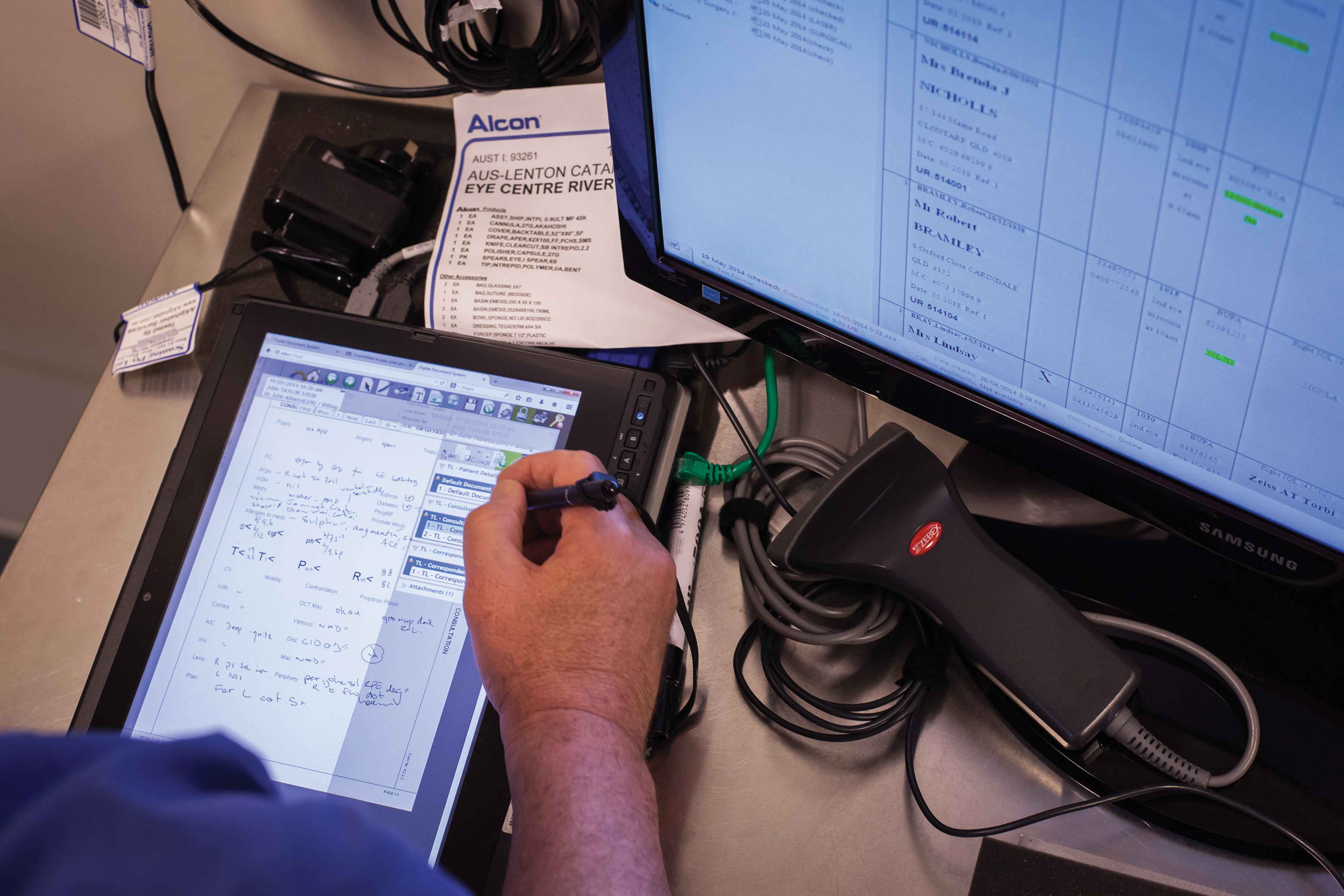5 Reasons to consider cloud-based paperless medical records systems
 Thinking about going paperless in your medical practice? One of the first big decisions you will be confronted with is whether to choose a web-based solution or a desktop application installed locally on your desktop computer.
Thinking about going paperless in your medical practice? One of the first big decisions you will be confronted with is whether to choose a web-based solution or a desktop application installed locally on your desktop computer.
Desktop-based medical records management applications are more traditional and we are very familiar with clicking an icon to launch a program. Web-based software is different. Anytime you log into your Gmail account or do your internet banking, you’re using web-based software. Unlike installed software, web-based software is accessible via the internet on a variety of devices including mobile platforms like iPads.
So, what’s so good about web-based software when it comes to paperless medical records systems?
Here are the 5 Reasons
1. Compatibility issues are a thing of the past
If it’s web-based, there are never any compatibility concerns. Web-based software works on any platform with an inbuilt web-browser (standard in all devices) whether it’s MAC, Windows or Linux. There is no need to download any programs or install any CDs and upgrades are automatic – you don’t have to think about them.
2. Web-based software is safe and secure
With web-based systems, data is stored on secure, state-of the-art servers and is automatically backed up every day. Enterprise-class firewalls keep your patient records safe. This is a breath of fresh air for users of electronic records systems who have spent time, energy and money in the past worrying about adequate back-up procedures, and the risks of having the patient file back up stored in the same place as the patient files…
3. Everything is in one place
One of the best things about the web-based software is that all your patient records are stored in their latest format in one central place and accessible over the web via any computer at any time. This is a huge advantage over both paper-based record systems as well as traditional electronic record management systems. This also means that – unlike with traditional software design – everyone has access to the most up-to-date version of the medical record. Multiple users can access the same patient record to discuss a case, with both having the capacity to add changes to the file in real time. This is fabulous news for doctors who are collaborating with overseas or interstate colleagues.
 4. Your records go with you
4. Your records go with you
It doesn’t matter if you are running with the bulls in Pamplona or fly-fishing in the Yemen; with a web-based solution, as long as you have Internet access, your patient records are with you. You can work from home, while you travel, at a conference – even on your mobile phone – and have constant access to your patient records. While many doctors I know would baulk at the very idea of taking their work with them on holiday, it can come in very handy! For example, if a patient in Australia needs a new script for their medication, their doctor can simply log in to their record from anywhere in the world and add their signature to the script, which moments later can be printed out and handed to the patient or emailed to the pharmacy.
5. No need to install updates
Web-based software is automatically updated without ever having to install updates. This is a huge benefit for version control, as all medical files are immediately updated to the latest version as soon as you save your changes.
Web-based software is simple to use and allows you to focus on what you do best – practicing your medicine – rather than having to worry about technical, IT-guy stuff. You jump on, do what you want to do and jump off again. You don’t have to worry about the technical stuff. Simple. Backups and updates are managed by the provider so you can get on with your work – anywhere, anytime, any place.



![How to transition to paperless medical records systems. [3 Tips]](https://blog.scancare.com.au/hubfs/lady_photocopying.jpg)